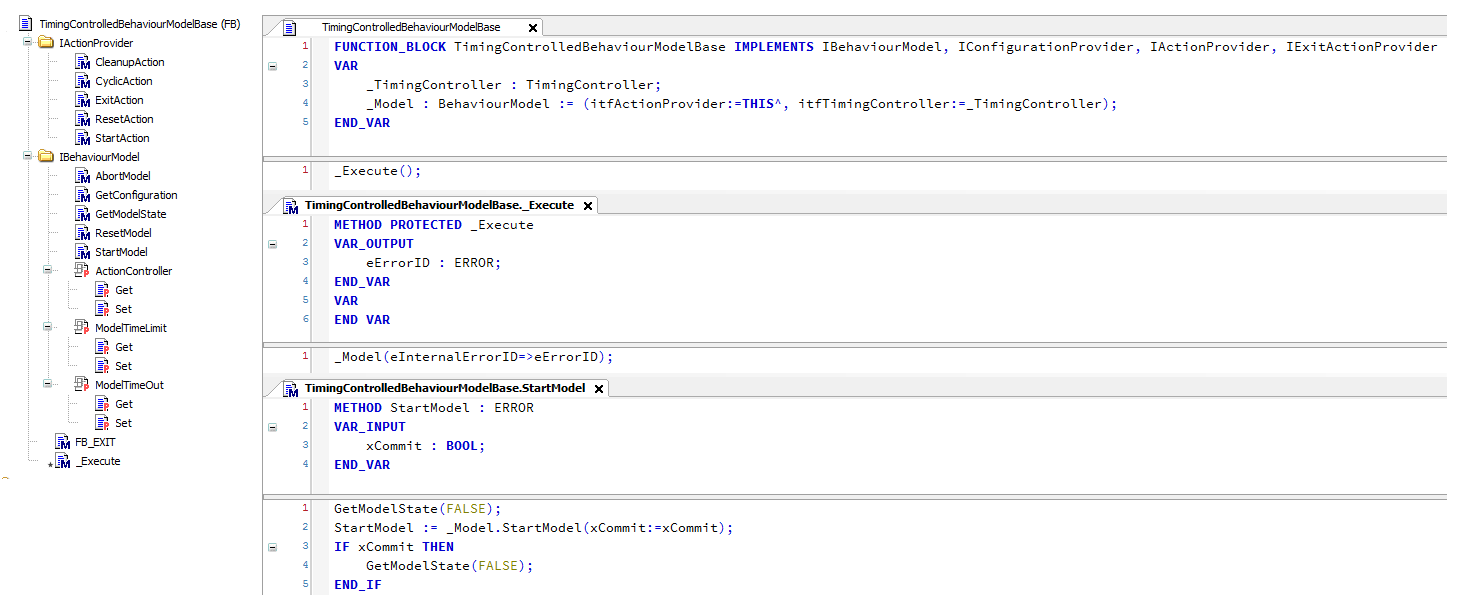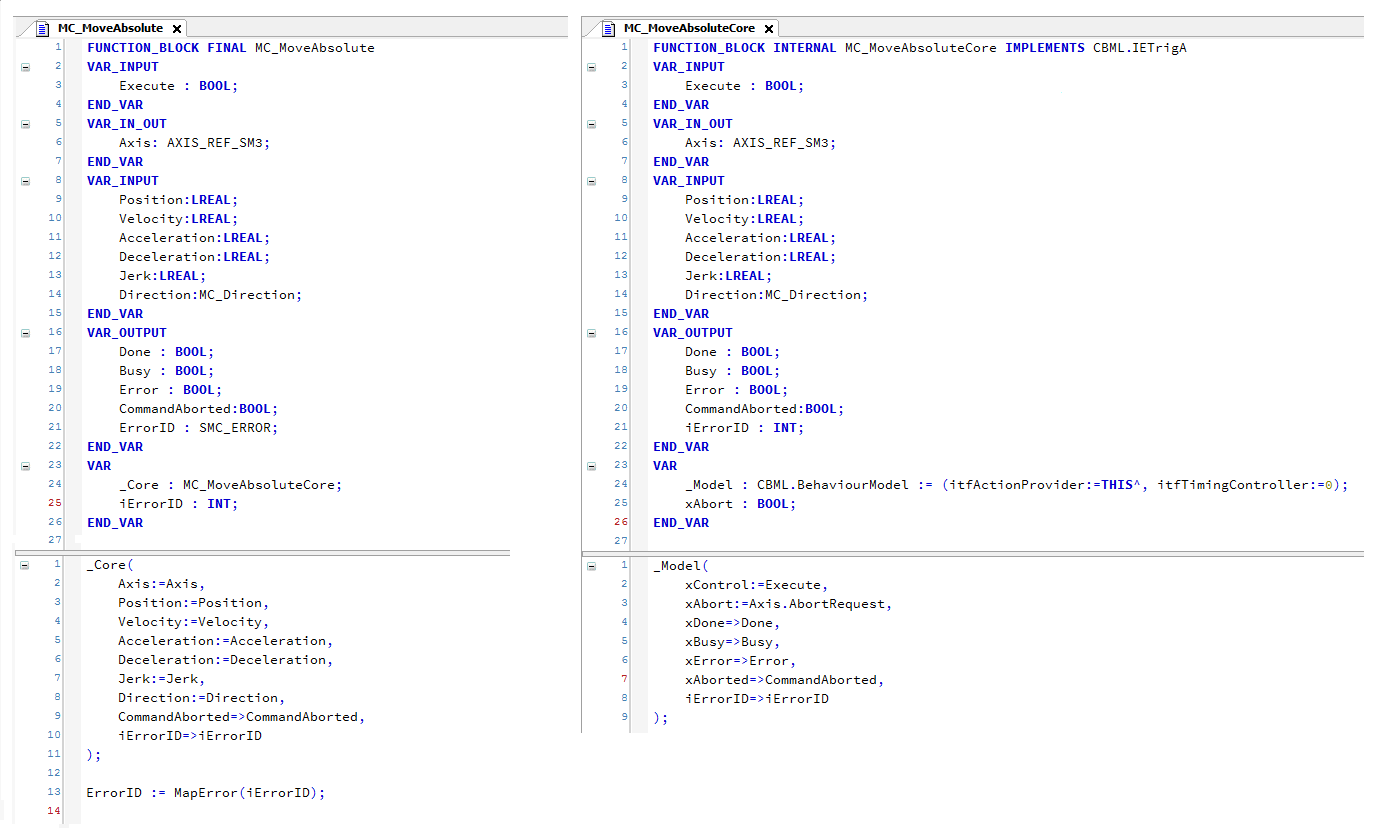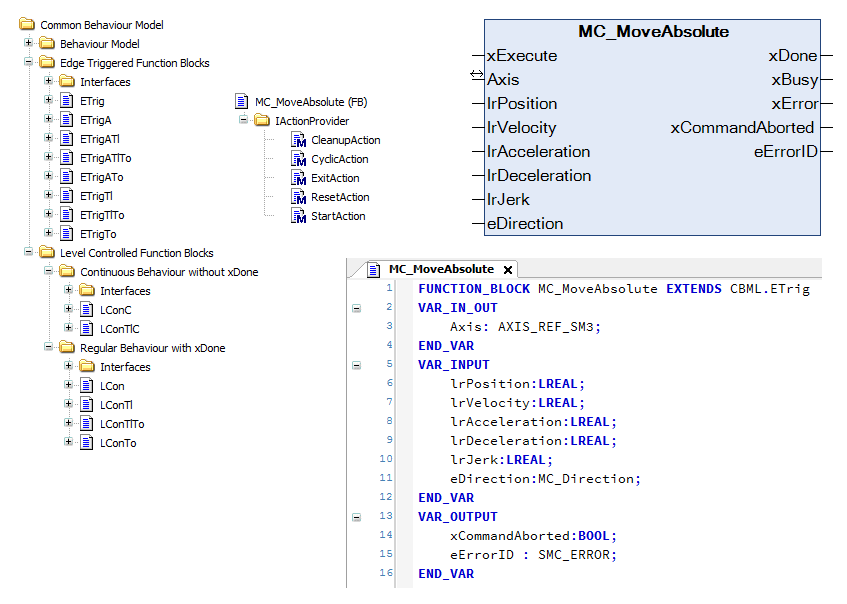Common Behaviour Model
Overview of function blocks, Interfaces and decorators which are provided by the CODESYS Common Behaviour Model Library
The library provides a base function block for each behaviour model specified by the PLCopen.
Reusing by Composition
The base function block for all timing controlled function blocks (TimingControlledBehaviourModelBase) can be created by using composition. For this the BehaviourModel function block and a TimingController function block is incorporated. The input variables itfActionProvider and itfTimigController are initialized properly. Additionally a set of interfaces is implemented. Every call of a method and every access to a property has to be delegated to the local BehaviourModel instance.
Using composition for creating a new function block TimingControlledBehaviourModelBase

The methods of the IActionProvider interface yield the possibility to adapt them inside the function block by extending the base function block. The implementation of the methods which are part of the IBehaviourModel interface (e.g. StartModel), allow to couple the input and output variables between the locale BehaviourModel instance and the input and output variables of the extending function block. The method GetModelState was chosen for this task.
The implementation of the body of the base function block is factored out to the protected method _Execute. So the behaviour of a call out of the PLC cycle can be modified by the function blocks extending this base function block later.
Using Composition for Creating new Function Blocks
Using composition for creating a new function block MC_MoveAbsolute using a ETrigA behaviour

By creating two function blocks, one internal core function block and one public final function block it is possible to encapsulate the complete implementation details. Using this technique the layout of the public function block is completely decoupled from the layout of the internal function block (See the different naming conventions for variable names). Because of the FINAL keyword it is not possible to extend this function block in another context. So no problems can occur after changing some implementation details (For example adding some local variables). Because of the INTERNAL keyword nobody can use a function block marked in this way outside of its defined context, its original library.
Reusing by Inheritance
The base function block for a ETrigTl behaviour is created by extending the base function block TimingControlledBehaviourModelBase described in the last chapter. The common input and output variables are declared. Nearly the complete implementation can be inherited form the TimingControlledBehaviourModelBase function block. Only a small amount of code is necessary to adapt the new function block regarding the ETrigTl specification. The new function block is now a full member of the BehaviourModel family. It may be used as well via its inputs and outputs such as via the implemented interface IBehaviourModel.
Using inheritance for creating a new function block ETrigTl

The other function blocks like LCon, LConTl, LConTo, LConTlTo, LConC, LConTlC or ETrig, ETrigTo, ETrigTlTo, ETrigA, ETrigATl, ETrigATo, ETrigATo and ETrigATlTo are generated in the same way.
Using Inheritance for Creating new Function Blocks
To reuse such a base function block outside of the Common Behaviour Model Library it is necessary to create a new function block that extends the desired base function block from the library. Additional variables can be added and the specific implementation of its behavior can be placed into the methods StartAction, CyclicAction, CleanupAction and ResetAction. The inherited BehaviourModel instance will guarantee to call the right method at the right point in time.
Using inheritance for creating a new function block MC_MoveAbsolute extending CBML.ETrig

